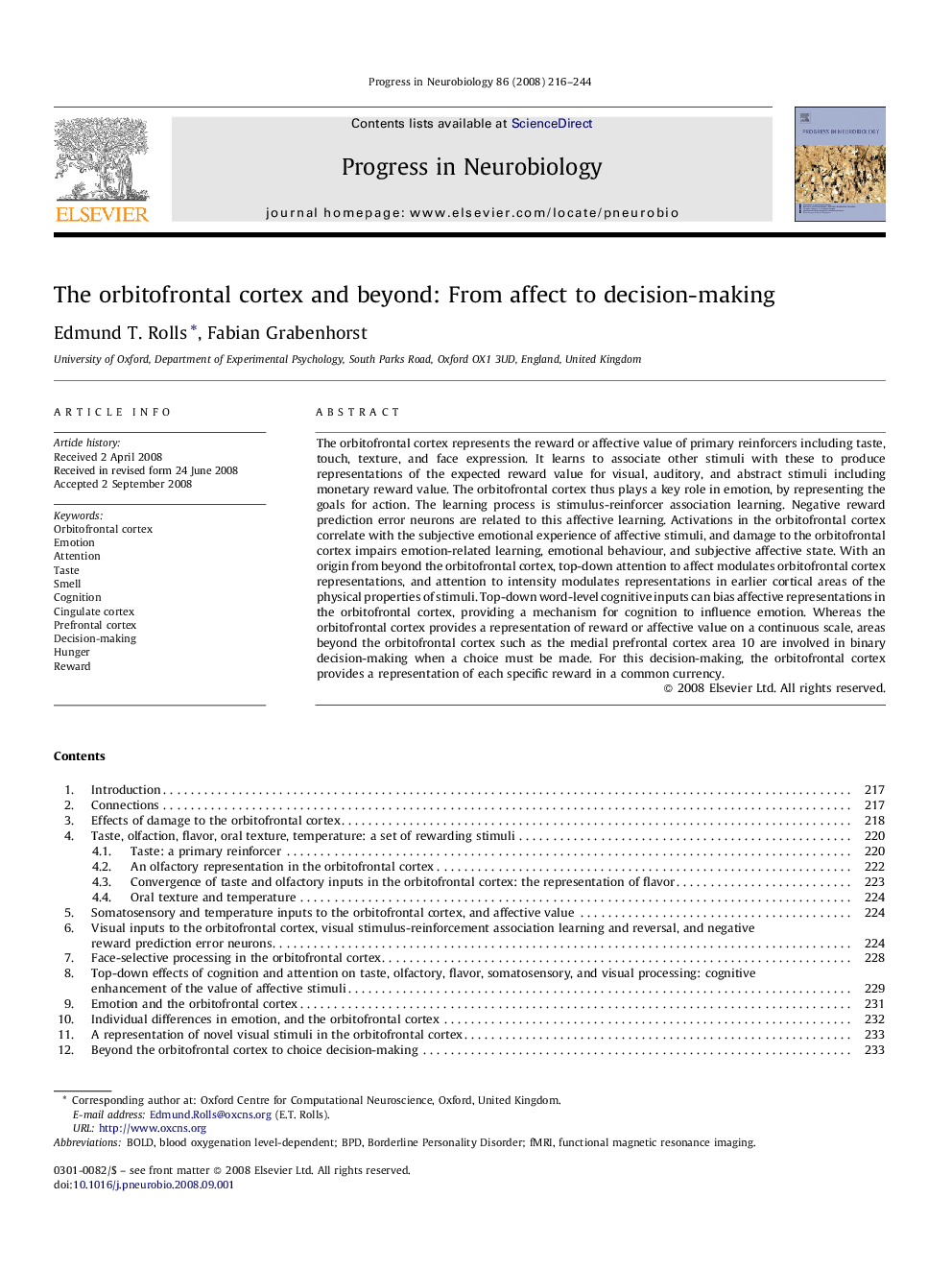| کد مقاله | کد نشریه | سال انتشار | مقاله انگلیسی | نسخه تمام متن |
|---|---|---|---|---|
| 4353866 | 1298512 | 2008 | 29 صفحه PDF | دانلود رایگان |

The orbitofrontal cortex represents the reward or affective value of primary reinforcers including taste, touch, texture, and face expression. It learns to associate other stimuli with these to produce representations of the expected reward value for visual, auditory, and abstract stimuli including monetary reward value. The orbitofrontal cortex thus plays a key role in emotion, by representing the goals for action. The learning process is stimulus-reinforcer association learning. Negative reward prediction error neurons are related to this affective learning. Activations in the orbitofrontal cortex correlate with the subjective emotional experience of affective stimuli, and damage to the orbitofrontal cortex impairs emotion-related learning, emotional behaviour, and subjective affective state. With an origin from beyond the orbitofrontal cortex, top-down attention to affect modulates orbitofrontal cortex representations, and attention to intensity modulates representations in earlier cortical areas of the physical properties of stimuli. Top-down word-level cognitive inputs can bias affective representations in the orbitofrontal cortex, providing a mechanism for cognition to influence emotion. Whereas the orbitofrontal cortex provides a representation of reward or affective value on a continuous scale, areas beyond the orbitofrontal cortex such as the medial prefrontal cortex area 10 are involved in binary decision-making when a choice must be made. For this decision-making, the orbitofrontal cortex provides a representation of each specific reward in a common currency.
Journal: Progress in Neurobiology - Volume 86, Issue 3, November 2008, Pages 216–244